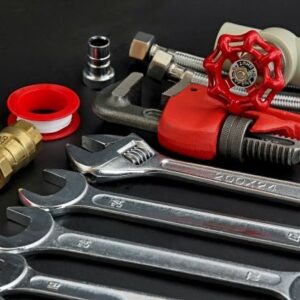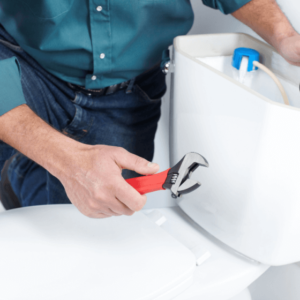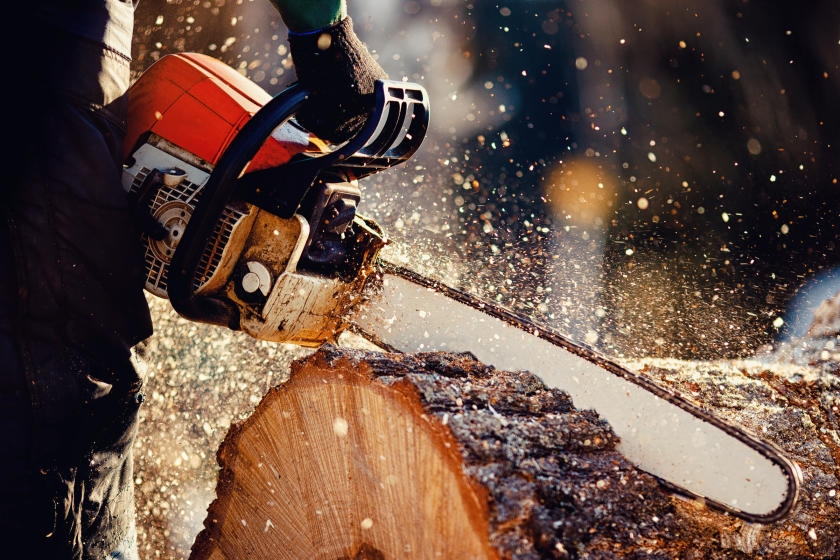A chainsaw can save a lot of time and effort when working on a project that requires one. While they offer convenience and efficiency, they can also pose a serious safety hazard if not used and maintained properly. No matter if you’re a DIYer or a logger, knowing the rules for proper chainsaw maintenance and use is essential.
How to Use Your Chainsaw Safely
After years of working with a chainsaw, it is easy to become complacent when it comes to using safety equipment and the tool’s safeguards. If that’s you, take time to revisit some safety rules. And, if you’re a relative beginner to chainsaw operation, here you can learn how to use safety equipment correctly from the start. Remember, chainsaw accidents happen mostly because of user error or poor maintenance.
Step 1: Use Safety Gear with Your Chainsaw
Always wear safety glasses or goggles and a hard hat when working with a chainsaw. Consider wearing ear protection as well. Also, don’t forget to wear a dusk mask or respirator if there are excessive amounts of sawdust and particles in the air. Wear steel-toed work boots to protect your feet and safety work gloves for a secure grip on the saw and to protect your hands from flying debris.
Safety Alerts!
When using a chainsaw, do not wear loose clothing, over-sized gloves, jewelry or any accessories that can get caught in the chain or other moving parts. In addition, long hair should be pulled back.
Only use a chainsaw in the way it was intended to avoid accidents and injury.
Keep children and others away from the work area when using a chainsaw.
Step 2: Use Safety Devices on Your Chainsaw
chainsaws have built-in safety devices that ensure safe operation. Use them. These safeguards protect you from moving mechanical parts and reduce the chance of injury. Never remove, disengage or otherwise disregard safety guards when the saw is in use.
- Chain Break – The chain brake stops the chain in the event of a “kickback” (when the chain hits an immovable object or becomes stuck, the saw blade can jump back toward the user and cause injury). Usually the chain brake is activated when the top hand guard is pushed forward. This can occur by purposefully pushing the guard forward or automatically when a kickback occurs.
- Throttle Lock – This prevents accidental chain activation. The throttle is operated with a trigger on the rear handle. If the lock-out switch is not pressed at the same time as the throttle trigger, the chain won’t be activated.
- Hand Guard – This feature protects your rear hand from the event of a broken or derailed chain that is not stopped by the chain catcher.
- Stop Control – The stop control, AKA the “kill switch,” allows for quick and easy engine shutoff in the case of an emergency.
Helpful Tip
It is a good idea to have a first-aid kit nearby at all times when you’re working with a chainsaw.
Step 3: Cut Correctly with Your Chainsaw
Because kickback is a common accident that can occur, you should take steps to avoid it. When kickback occurs, it can happen too quickly for you to react. Always stand to the side of the saw. If your right hand is holding the rear of the chainsaw, stand to the left of the saw. Don’t ever cut with the saw’s tip, as doing so can often result in kickback.
When felling a tree, always plan for where and how the tree will fall. Cut at an angle that will make the tree fall in the direction you want. Keep a clear path for getting out of the way in case the tree comes down in your direction. Watch out for power lines and any nearby structures as well. If you’re unsure of how the tree will fall or if the tree is exceptionally large, call in a professional. If cutting down limbs to thin out a tree’s canopy, be sure the cut limbs won’t fall on you or anything nearby.
When operating a chainsaw, be sure you’re working with secure footing and standing on steady ground. If you were to fall, you could be seriously injured by the saw. At all times, keep both hands on the handles of the chainsaw. Cut below waist level, never above your head.
When you need to refill a hot saw with gasoline, let the engine cool down for a few minutes before pouring in the gas to avoid a fire or explosion.
Safety Alert!
Never operate a chainsaw while standing on a ladder.
How to Maintain Your Chainsaw
While accidents can happen and are unforeseeable, another way to avoid a chainsaw safety incident is to keep the tool maintained and running smoothly. Because of their mechanical parts, chainsaws are susceptible to problems caused by regular use, poor maintenance, as well as dust and debris accumulation. View these steps for proper chainsaw maintenance, to help keep your chainsaw safe and efficient.
Step 1: Clean Your Chainsaw
Wipe the chainsaw down with a rag after every use and before storing it away. Do a deep cleaning periodically with a damp cloth. Get into exhausts, intakes and other hard-to-clean areas by using cotton swabs, lightly swabbed with machine oil.
Helpful Tip
Use an air compressor or a can of compressed air to blow air into vents and crevices to remove dirt and dust from inside the saw.
Step 2: Inspect Your Chainsaw
Routinely inspect the chainsaw for damage or wear. Pay attention to how the saw runs, and look and listen for any strange noises or other indications that something isn’t working correctly. Be sure that screws, bolts, etc. are tightened securely. Pay particular attention to the chain. A damaged or loose chain can derail or break and come back at the user and cause severe injury. Likewise, a chain with bent, dull or broken teeth can be a kickback hazard as well. Always keep the chain sharp and in proper working condition.
Step 3: Sharpen Your Chainsaw
To sharpen the chain, hold the saw in place with a vise so that it will not move around. Activate the chain brake. You can then sharpen the cutting teeth with a file. Attach a sharpening guide to the bar (the part of the blade around which the chain moves). Double-check that you have the correct file size for your chain’s teeth. Insert the file into the guide and sharpen each tooth with an even, forward stroke. You should be able to sharpen your chain’s teeth several times before the chain needs replacement.
Replace the chain if it is heavily worn or if any teeth seem compromised. Be sure the new chain is properly matched to the guide bar and the saw. Your chainsaw’s manufacturer will specify which chains will work. You can also ask an expert at your local True Value hardware store. To replace the chain, follow the chainsaw’s manufacturer instructions carefully. A loose chain can become dangerous. Generally, you will remove the bar to put the new chain in place. You should be able to pull the chain up about a ¼” from the bar if the chain is on correctly.
Step 4: Oil Your Chainsaw
Gas-powered chainsaws have a 2-stroke engine that requires approximately 2 to 5% oil in the fuel used to power them. Be sure you get the right type of oil to add to your gasoline. Ask an expert at your local True Value hardware store if you need help. You must also buy chain or bar oil with which to lubricate the saw’s bar and chain. This keeps the saw operating and cutting efficiently and safely. It must be reapplied periodically because it flies off of the chain and bar during use and is also removed by actual cutting. A good rule of thumb is to use chain and bar oil when you refuel the saw.
Step 5: Store Your Chainsaw Properly
Keep the saw protected from dust, moisture and other adverse conditions by storing it properly after use. Invest in a blade scabbard to keep the blade protected and then stow it away in a storage drawer or tool locker, preferably in a garage or basement with a moderately controlled climate.
Helpful Tip
Keep the instruction manual. It is provided to you by the manufacturer so that you can safely and competently operate your chainsaw. It also has valuable information on how to care for the saw, find replacement parts and other important pieces of information. Keep the manual either in a toolbox drawer or a cabinet in your workspace/storage area so that it is readily available.
That’s it! You now know how to safely use and maintain your chainsaw.
Project Shopping List
Here’s what you’ll need to complete this project successfully.
- Chainsaw
- Safety glasses or goggles
- Hard hat
- Ear protection
- Dust mask
- Steel-toed work boots
- Safety work gloves
- First-aid kit
- Rag
- Damp cloth
- Cotton swabs
- Machine oil
- Air compressor or can of compressed air
- Vise
- Sharpening file guide
- File
- Replacement chainsaw chain
- 2-stroke engine oil
- Bar and chain oil
- Blade scabbard
- Tool storage drawer or tool locker












